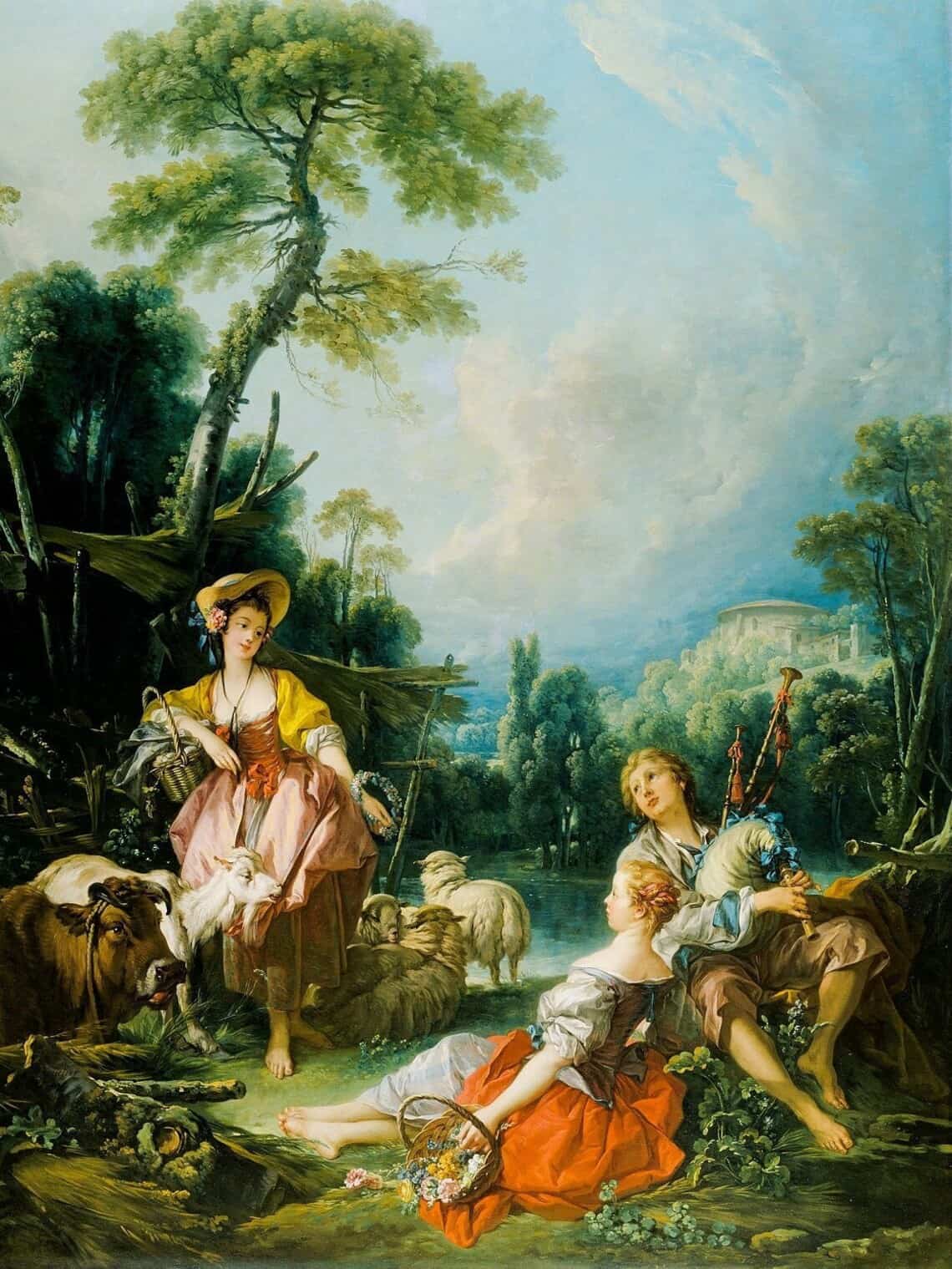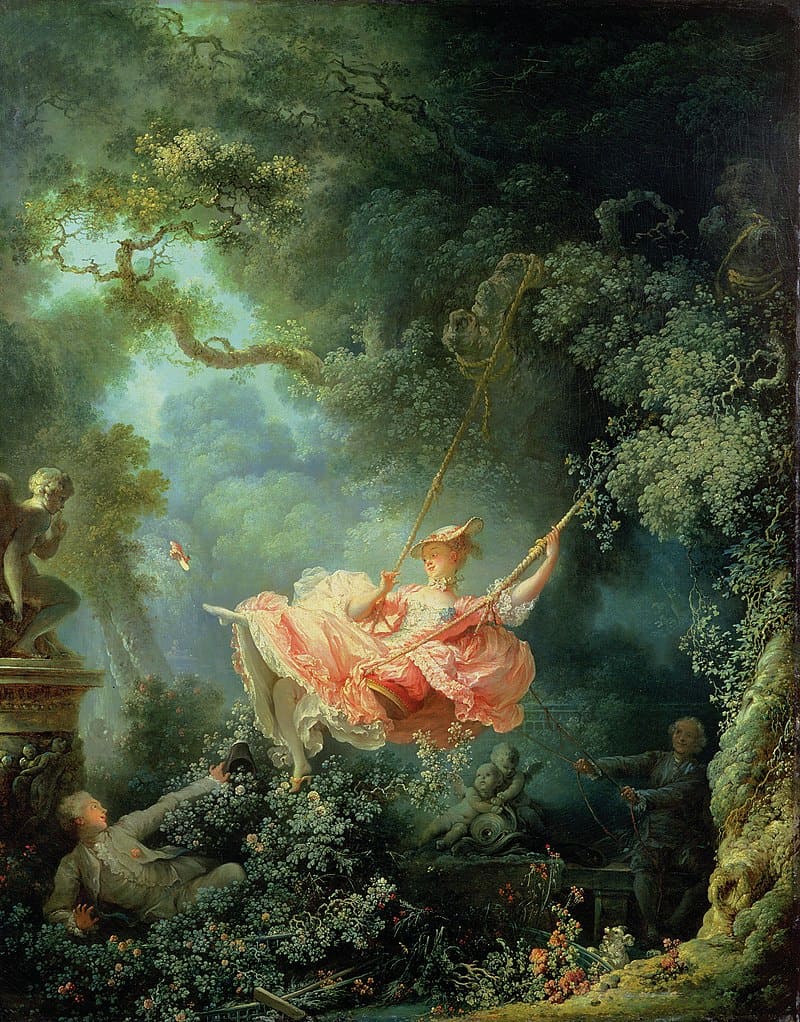
Rococo
The name ‘Rococo’ is generally used to refer to an artistic style from the 18th century, which came to embody the gallantry and carefree living enjoyed by the nobility and the affluent classes. The style first emerged in France and reached the height of its popularity during the reign of Louis XV, with the result that it came to be thought of as a French style. Be that as it may, there were followers of the trend in other European countries too, but in those countries Rococo did not become the dominant trend. Moreover, in the age of the Enlightenment this artistic movement was subjected to fierce criticism, with pithy put-downs such as “the period of bad taste” used to denigrate it. The name ‘Rococo’ is derived from the French word ‘rocaille’, which translates as ‘pebble’ or ‘shell’, but is more often used with the meaning ‘fragment’. The first examples of this movement being applied were seen in the design of park grottos, where seashells and pebbles were used as decorations. This was how the standard ‘rocaille’ ornamentation was formed, whilst the distinctive decorative element came to be known as ‘rocaille curves’.
Art historians often express the view that Rococo is just another embodiment of Baroque motifs, but this is in fact too much of a generalization. There cannot be a direct connection, for the simple reason that Baroque never really enjoyed widespread popularity in France. Naturally, a number of similar trends can be perceived, which clearly serve as a counterweight to the rationality of classicism, but Rococo offers up a whole host of very individual characteristics.
– The subjects demonstrate a wide variety of scenes from people’s private lives, which have opened themselves up to the bystander’s gaze as if by accident.
– The emotional background is filled with languor, sentimentality and a certain amount of frivolousness.
– The colour palette is made up of pastel tones and smooth transitions.
– Private scenes from rural life convey idealized images of people whiling away the hours in nature’s soft embrace.
– People from a simple class in society are endowed with tender features and a refined stature. Meanwhile, suffering and ugliness in all its forms are not considered worthy of the artist’s attention at all.
– There is a general preference, in terms of subject matter, for gallant themes, with a decent smattering of risqué details. Religious motifs are only used by way of an exception.
Taking account of the characteristic features of the way images and moods are conveyed, it is definitely safe to conclude that Rococo serves as a counterweight to Baroque just as surely as it does to classicism.
- The aristocracy in the time of Louis XV thought that it was preferable for etiquette and pleasures to be shared. The comforts of the great and the good were removed from the halls of palaces and put into the elegant dining rooms of private houses with original designs, and fashionable salons. Artists started to be inspired by idealized images of rural life, where the protagonists were simple shepherds and peasants with flawless features (e.g. François Boucher’s ‘The Beautiful Kitchen Maid’).

- Gazing at the paintings from that era, one might easily come to the conclusion that the characters portrayed in them are not labourers from the depths of the countryside, but aristocrats dressed in ordinary clothes, enjoying some leisure time in the country. They have the carefree expressions of people who are enjoying the scent of the grass and the flowers in the meadows, the birdsong and the fresh air (e.g. François Boucher’s painting ‘A Summer Pastoral’).

- An equally popular subject for artists was that of a higher love that did not shy away from carnal manifestations, with frank portrayals of nudes. Attractive female aristocrats were eager to pose for a talented artist who could adeptly portray their magnificently shapely bodies in scenes of gallantry (see William-Adolphe Bouguereau’s painting ‘The Nymphaeum’).

- Paintings created in the Rococo style are imbued with a positive energy that transmits to onlookers the ecstasies of triumphal figures enjoying the trappings of their wealth. The atmosphere of general rejoicing demonstrates a special dynamic. One gets the impression that the space around them is going to filled with uproarious laughter in the very next instant (see Jean-Honoré Fragonard’s painting ‘The Swing’).

- A considerable number of works were created in the portrait genre. Here, though, the protagonists often avoided props associated with the real world around them. They preferred to be shown in the form of mythical characters, demonstrating their earthly desires in divine incarnations (see Charles-Joseph Natoire’s painting ‘The Toilet of Psyche’).

- Artists’ attention was also caught by images of little children, shown as chubby little chaps playing excitedly. They were often portrayed with little wings on their backs, alongside divine characters representing the older protagonists in the painting (see François Lemoyne’s painting ‘Venus and Adonis’).
The protagonists shown in the paintings from this era know no disease, sorrow or old age: they all convey beauty and carefree youth. A distinguishing feature of these characters’ look is their bright rosy cheeks, standing out on their exaggeratedly pale skin.
For all its frivolity and lack of an ideological subtext, Rococo made a significant contribution to the overall development of art. The creators of Rococo artworks demonstrated to the viewer that creativity can convey the most earthly of moods with simplicity, and not just serve as a means of representing ideas about morality. The new style became a conduit for the life of the aristocracy, focusing attention on simple human joys, albeit while portraying the world-view of only one particular class in society.






